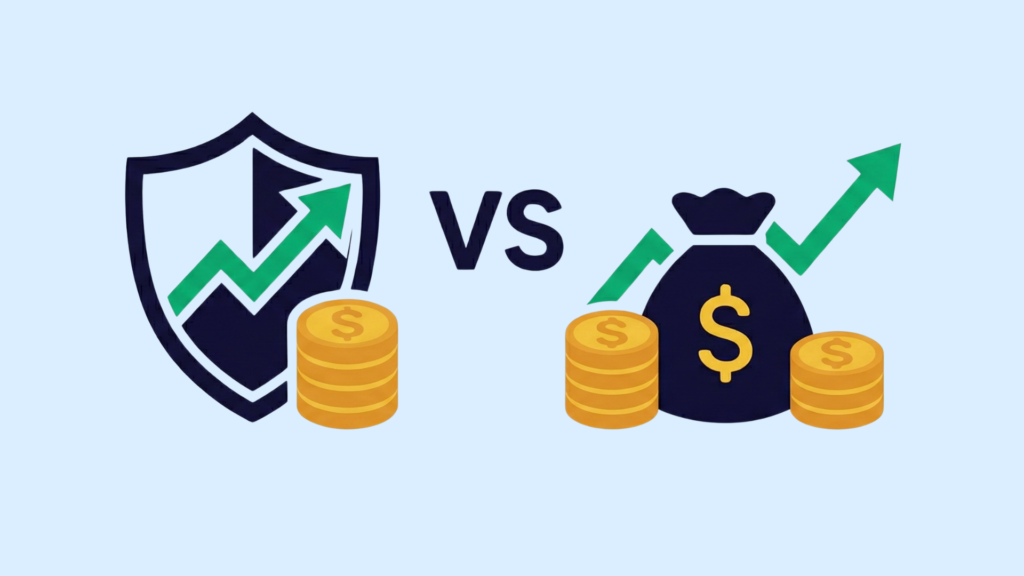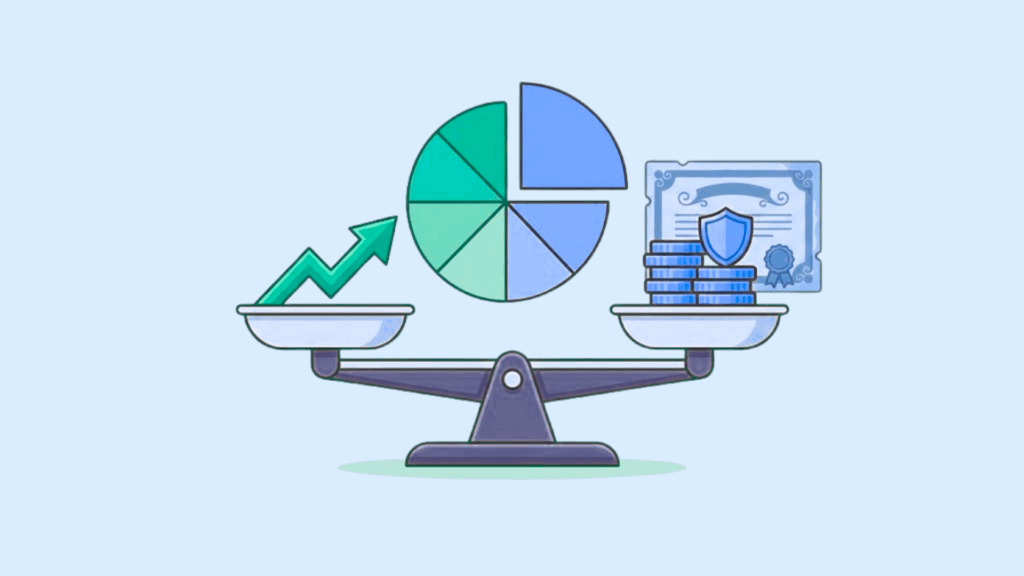Evaluating mutual funds is all about understanding how consistent, reliable, and suitable a fund is for your goals. Mutual fund analysis involves checking performance against benchmarks, studying risk metrics, and considering costs like expense ratios.
By learning how to evaluate mutual funds, you can avoid common mistakes, compare options effectively, and align your portfolio with both your risk appetite and time horizon. In this blog, we will walk you through the practical steps of mutual fund performance analysis so you can make smarter, more confident investment choices.
Understanding Mutual Fund Performance
Mutual fund performance refers to the gains or losses generated by a fund over a period of time. It is one of the most important criteria in deciding whether to invest, stay invested, or exit a fund. A proper evaluation of mutual funds goes beyond looking at raw numbers—it also accounts for consistency, risk, and how the fund fares against its benchmark index.
Daily SIP at just ₹11 a day makes mutual fund investing accessible, even with a small, regular investment. Starting with ₹11 a day enables you to steadily grow your portfolio, with minimal financial commitment, while focusing on long-term performance rather than short-term market fluctuations.
Types of Returns in Mutual Fund Performance Analysis
To make sense of a fund’s track record, it’s essential to know the different ways returns are calculated:
- Absolute Returns: Show the total increase or decrease in the value of your investment over a specific period. Best for short-term evaluations.
- Annualised Returns: Indicate how much your investment has grown per year, averaged across the entire holding period. This helps compare funds with different tenures.
- CAGR (Compounded Annual Growth Rate): Reflects the year-on-year growth of your investment, factoring in compounding. CAGR is widely used in mutual fund performance analysis because it gives a realistic view of long-term performance.
Key Metrics for Mutual Fund Analysis
When doing mutual fund analysis, investors need to look beyond just the headline returns. The following key metrics help you understand the fund’s performance and suitability for your goals:
- Net Asset Value (NAV): Indicates the per-unit price of the fund, reflecting its current value. While NAV itself doesn’t show performance, tracking its growth over time is very important.
- Expense Ratio: Expresses the annual fee that the fund house charges. A lower expense ratio is usually better, as it lowers the cost of investing.
- Fund Manager Track Record: The experience and consistency of the fund manager play a big role in the long-term success of a scheme.
- Risk Metrics:
- Standard deviation measures volatility of returns.
- Beta indicates the fund’s sensitivity to market movements.
- Sharpe ratio assesses whether the fund’s returns justify the risk taken.
How to Analyse Mutual Funds Step by Step
If you’re wondering how to analyse mutual funds effectively, here’s a structured approach to follow:
- Check Historical Performance and Returns: Look at 1-year, 3-year, and 5-year returns. Avoid judging funds only on short-term results; consistency matters more.
- Compare with Benchmark Indices: See if the fund has consistently outperformed its benchmark (like Nifty 50 or Sensex). This shows if the fund is adding real value or just mirroring the market.
- Evaluate Fund Consistency and Volatility: A good fund delivers steady returns across market conditions. Use volatility indicators like standard deviation to check stability.
- Consider Fund Manager and Investment Strategy: Study the fund manager’s past track record and whether their style aligns with your financial goals. A strong, well-defined strategy is critical for long-term success.
- Daily SIP at just ₹11 a day is an excellent way to invest consistently and measure performance over time. By starting with a small, manageable amount, you can evaluate how well your chosen fund performs relative to market benchmarks without needing a large upfront capital.
Tools and Resources to Check Mutual Fund Performance
If you are wondering how to check mutual fund performance, there are several trusted tools and resources available to investors in India.
- AMFI (Association of Mutual Funds in India): The official source for NAVs, fund details, and regulatory updates.
- Value Research Online: This tool helps with evaluation of mutual funds by providing star ratings, fund manager history, expense ratios, and consistency checks across different timeframes.
- Morningstar India: Global research and analysis platform where you can analyse mutual funds based on risk-adjusted returns, category rankings, and portfolio insights.
- Fund House Websites: Most AMCs (Asset Management Companies) update their own websites with real-time data, performance charts, and fact sheets for investors who want direct insights.
- Mobile Apps: Apps from platforms like Zerodha Coin, Groww, and Kuvera allow you to check mutual fund performance instantly, track SIPs, and compare across funds in one place.
Common Mistakes to Avoid During Evaluation
When conducting mutual fund performance analysis, many investors focus only on returns and overlook other key factors. To make smarter decisions, here are some mistakes you should avoid while doing evaluation of mutual funds:
- Relying solely on past performance: It might be tempting to pick funds with the highest historical returns, but past performance doesn’t always mean great future results. A better approach is to compare returns against benchmark indices and check consistency across different timeframes.
- Ignoring expense ratios and hidden charges: Even a small difference in expenses can impact long-term wealth creation significantly.
- Neglecting risk-adjusted returns: Use ratios like Sharpe or Sortino to check whether the fund is generating adequate returns for the risk taken.
Conclusion
Careful mutual fund analysis means looking beyond surface-level numbers—focus on consistency, risk-adjusted returns, and long-term suitability. Combining the right tools, key metrics, and benchmark comparisons will give you a clear picture of how a fund is truly performing.
Whether you’re a beginner or an experienced investor, building the habit of regular mutual fund performance analysis can make a significant difference in your wealth creation journey. Always remember, don’t choose funds based only on the past performance but also see how well they fit your investment strategy and financial goals.
Did you know?
US ETFs (Exchange Traded Funds) offer a great opportunity for investors looking to diversify their portfolio with international exposure. With Appreciate, you can now access these ETFs easily, benefiting from the growth of US-based companies. Investing in US ETFs can be a strategic way to tap into global markets, adding stability and potential growth to your investment strategy.
FAQs
What are the key metrics to consider in mutual fund analysis?
In mutual fund analysis, investors should look at expense ratio, assets under management (AUM), fund manager track record, risk ratios (Sharpe ratio, standard deviation), and consistency of returns. These factors give a complete view of the evaluation of mutual funds before investing.
How do I compare mutual funds with benchmark indices?
To know how to analyse mutual funds, always compare the fund’s returns with its benchmark (like Nifty 50 or Sensex). A fund consistently outperforming its benchmark reflects effective management, while underperformance indicates the opposite.
Can past performance predict future returns of a mutual fund?
No. While mutual fund performance analysis often includes past returns, they don’t guarantee future performance. Instead, focus on long-term consistency, portfolio allocation, and market conditions when evaluating.
Which online tools are best for evaluating mutual funds?
If you’re wondering how to evaluate mutual funds, several reliable platforms like Value Research, Morningstar India, and Moneycontrol provide tools for comparing returns, risk ratios, and other performance metrics.
How often should I review my mutual fund investments?
Knowing how to check mutual fund performance regularly is key. A quarterly or half-yearly review is recommended to assess whether the fund is meeting your goals. Don’t react to short-term volatility and focus instead on long-term performance.
Disclaimer
The information provided in this article is for educational and informational purposes only. It should not be considered as financial or investment advice. Investing in stocks involves risk, and it is important to conduct your research and consult with a qualified financial advisor before making any investment decisions. The author and publisher are not responsible for any financial losses or gains that may result from the use of this information.























